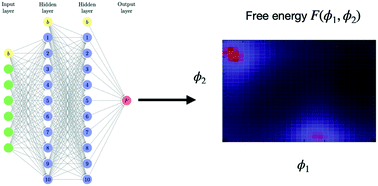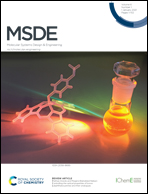Towards a machine learned thermodynamics: exploration of free energy landscapes in molecular fluids, biological systems and for gas storage and separation in metal–organic frameworks
Abstract
In this review, we examine how machine learning (ML) can build on molecular simulation (MS) algorithms to advance tremendously our ability to predict the thermodynamic properties of a wide range of systems. The key thermodynamic properties that govern the evolution of a system and the outcome of a process include the entropy, the Helmholtz and the Gibbs free energy. However, their determination through advanced molecular simulation algorithms has remained challenging, since such methods are extremely computationally intensive. Combining MS with ML provides a solution that overcomes such challenges and, in turn, accelerates discovery through the rapid prediction of free energies. After presenting a brief overview of combined MS–ML protocols, we review how these approaches allow for the accurate prediction of these thermodynamic functions and, more broadly, of free energy landscapes for molecular and biological systems. We then discuss extensions of this approach to systems relevant to energy and environmental applications, i.e. gas storage and separation in nanoporous materials, such as metal–organic frameworks and covalent organic frameworks. We finally show in the last part of the review how ML models can suggest new ways to explore free energy landscapes, identify novel pathways and provide new insight into assembly processes.



 Please wait while we load your content...
Please wait while we load your content...
